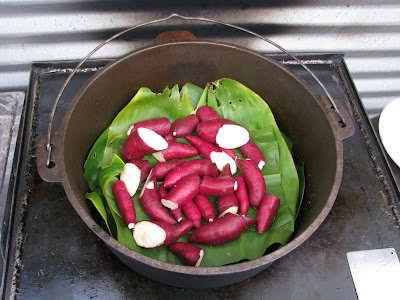This is one hell of a moment in history.
It's interesting in how the forum is going along, and the level of keen interest that's been generated even in one short week. I really sense, and I'm sure a lot of you do too, that we're living through a unique, even epic time. There's still a lot of confusion and denial out there floating around, and the fear of what's ahead explains a great deal of all that, perhaps even excuses a bit of it. No matter, what's coming is coming and rather than debate it's time to prepare.
The synchronicity of the moment is so shockingly unlikely on one hand--and so obviously predictable on the other that one cannot help but be a bit bewildered. We're seeing something I guess I'll call Peak Unsustainability for lack of a better term. Isn't it more than a little crazy that the housing market would collapse, primarily because people overbought, assuming an obviously unsustainable level of asset appreciation would continue forever? At the same time, they bought huge vehicles, assuming an obviously unsustainable supply of near freebee fuels would pour out forever? At the same time banks decided that they could carry a seemingly unlimited amount of debt on their books, assuming that they'd be able to float an obviously unsustainable amount of leverage forever? At the same time, of course, agricultural regions around the world begin to suffer a permanent drought, brought on by soil loss and the destruction of aquifers--and policies and practice that seem to by and large assume you could pump water at whatever rate you wanted to out of that well, in an obviously unsustainable manner--forever? The list goes on and on and on--in fact, one finds few individuals, or industries, or nations even, that haven't completely ignored their "balance sheet" and haven't run up completely unservicable debts not only in the realm of finance, but against our ecosystems, our croplands, our climate, even the integrity of our communities, institutions and personal relationships--the wealth and common good and even good will and trust has been completely looted. And to make matters worse? All of this wealth was squandered--tossed away on idle entertainments for the mega wealthy, trinkets for the rest of us, and, oh, I guess we got a couple of sex flicks out of Paris Hilton. . .
Obviously, key to to the lack of sustainability in the past was the complete neglect and even willful evasion on the part of most everyone in keeping good books. The amount of credit received either from bad loans or squandering natural resources was vast, but by and large kept in those mysterious "off balance sheet" assessments that now need to get valued. . .and so the response? Attempt to keep the party going by trying to squeeze even more blood out of that wrung out turnip. . .print money and expand the economy! Growth! As if this policy isn't obviously unsustainable and will only drag us deeper into the hole--but certainly patent unsustainability hasn't restrained anyone in the past, and it looks at this point that pumping that well will continue with bigger and bigger pumps until only dust comes out. . .
We have a lot to learn from this tendency. First, we must personally keep a rigorous accounting of our own practices. It's going to matter. Not only is unsustainable practice unsustainable, it's about to become rapidly and increasingly unaffordable, and as such no longer an elective for most. This will be a very big change in how things are done, oh boy--especially as we wind down a whole lot of people are going to find that they were sold out.
And they aren't going to be happy about all that.
You’ll Never Hear Me Complain About Ageism (And Why HR Departments Should
Be More Like My 5-Year-Old Granddaughter)
-
Age discrimination is real. I’ve got some extremely talented friends who
are experiencing it firsthand right now. But you’ll never hear me
complaining abou...
2 weeks ago










